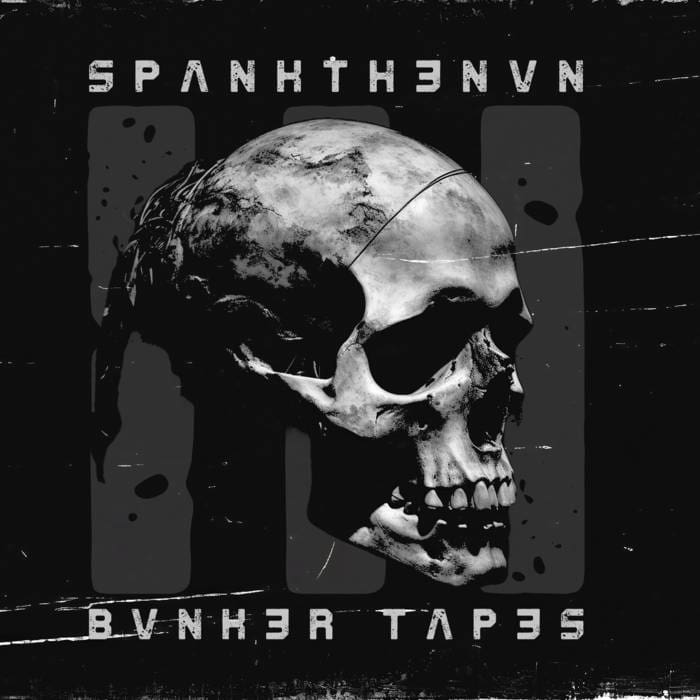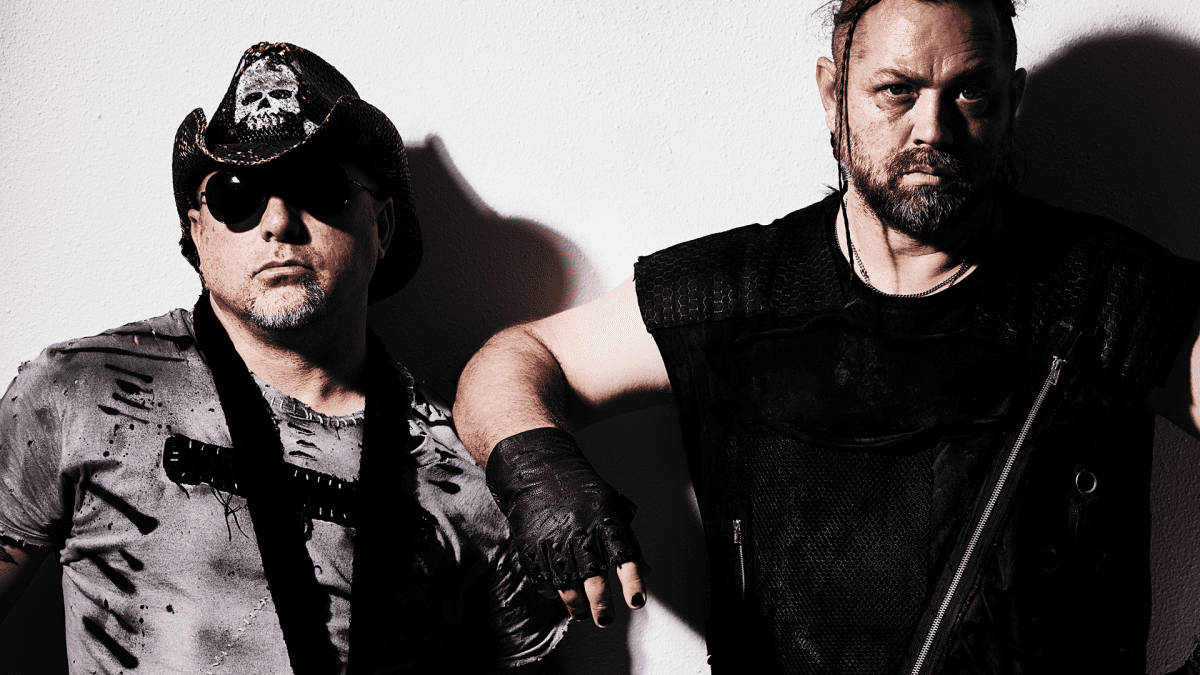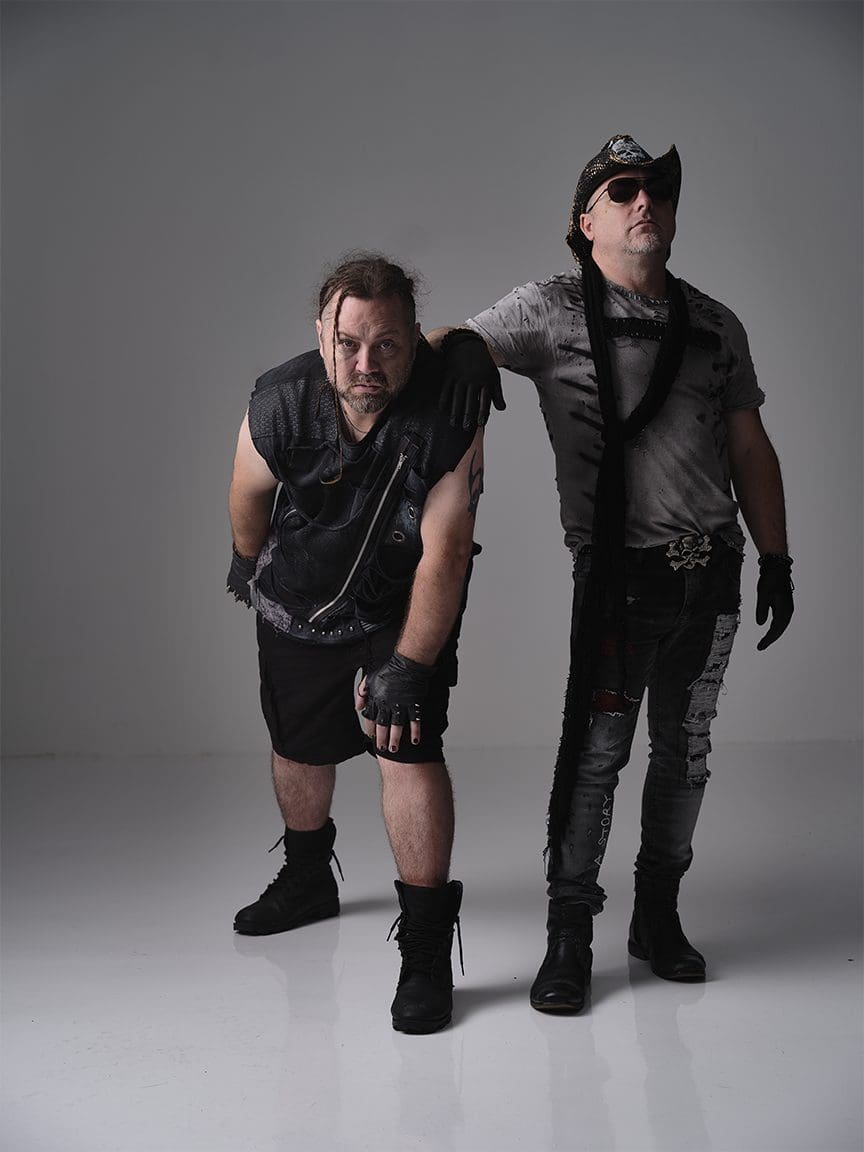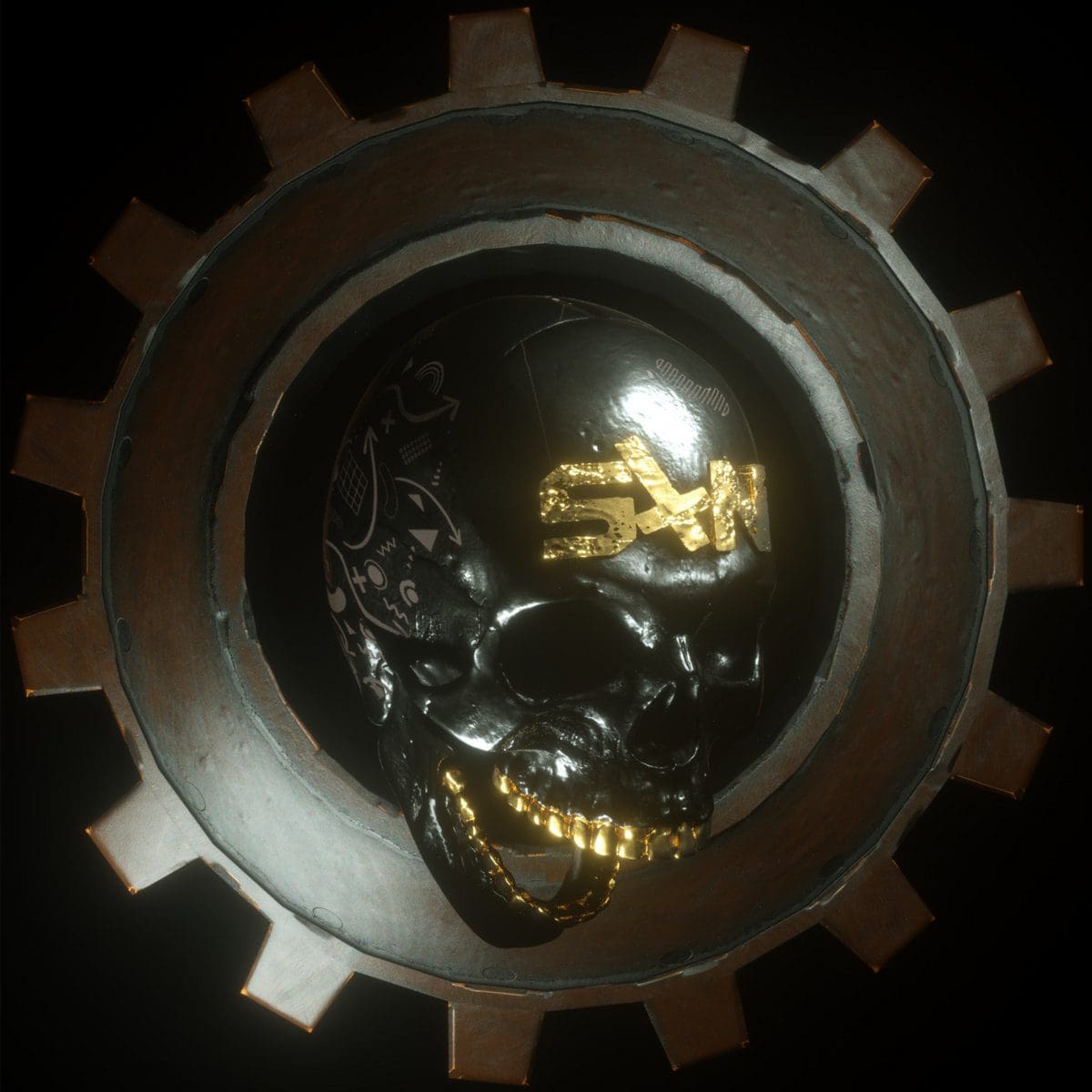Click Interview with Spankthenun: ‘This World We Live In Has Always Been An Adapt-Or-Die World’
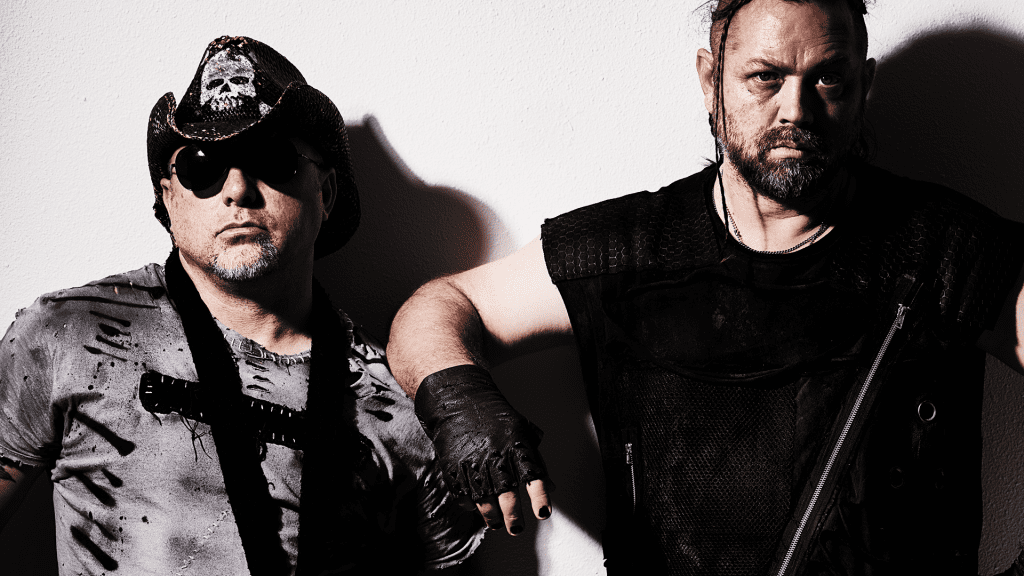

Spankthenun
Eric and Jeremy Hanes set up Spankthenun in 2019. The duo released an impressive number of top notch singles, albums and remixes. Dealing with a powerful mix of EBM and Dark-Electro the Hanes-brothers never stopped improving their work. The last year self-released album “The Bunker Tapes Vol.III” was a new masterpiece driven by solid bass lines, icy sound treatments, danceable rhythms and harsh vocals. I asked a few questions to Eric Hanes to get a bit more details about Spankthenun.
(Courtesy by Inferno Sound Diaries)
Q: Let’s traditionally start by asking you about the background of Spankthenun? How did the project saw the daylight and what brought you together?
Eric: Spankthenun began as an idea between my brother and I. We knew we wanted to do something with music but the original idea was more of a Love And Rockets meets Joy Division, with a full band. We experimented with that format for a while and had fun with it. We had trouble holding onto the guitar player and the drummer and stopped playing but kept writing. A number of years later I started experimenting with drum machines, DAWs and synths and started putting a new concept together. Writing a bunch of tracks, but with no plan for release. In 2019, I sent a few demos out to different producers looking for help with mixing and mastering… we ended up with a bunch of tracks, including a collab with Claus Larsen; he really helped us see the potential of what we had. He helped explain a few things to us that really set us on our journey. We worked with Scott Fox (iVardensphere) on mixing the album; he taught me the basics, and we pulled together the first album, which we released as Spankthenun.
Q: I think you set up Spankthenun in 2019 and already released an impressive number of works featuring three albums. How comes you’re that prolific and what means music vs. Spankthenun to you?
Eric:The first artist that agreed to work with us on a remix or production was Zoog Von Rock, he really gave us the confidence to push things forward and do it for real. Next, Claus Larsen agreed to work on “Rotting Meat” and took the time to help us understand songwriting better. We knew how to get what sounded good to us, but we didn’t really understand the concepts of melody and choruses and repeating what worked. Claus helped us understand that in a way that never made sense to us. The original “Rotting Meat” track we sent him did not have a chorus, he identified a hook in a random bridge we did and turned that into a chorus with a very strong hook that is powerful in the live shows and the club.
I also believe in being creative every day. As soon as I wake up I go into the studio and work for an hour on something new. I also like to end the day in the studio, especially if I am dead tired. I find that time to be a super creative time. I often create a complete track in an hour if I start on it at 2 am and in bed by 3 am. Other times, I get two or three good sketches down, and I forget about them until a few days or weeks later when I discover them again. There is something about being tired and being creative. I rarely get ‘writer’s block’. I subscribe to the David Lynch way of combating it. Keep your space you work in conducive to creativity and ideas. Have different things to work on when something isn’t working out. So, if I get stuck on a track or can’t come up with a good hook to get started. I’ll switch over to another artist’s track and remix, or I’ll switch over to the graphic side of things and design an album cover.
Q: Can you give us details about your perception of sound? Do you’ve a specific way of working together and references plus sources of inspiration when writing your music?
Eric: I have to have a hook in our songs; I put a hook in every song. Usually, it’s a bassline. Our basslines are often the melody of the track, too. I start with the bassline and kick and get a hook that works. if it works on that basic level, I keep working on it. I spend about 10 minutes doing that; if it doesn’t work in 10 minutes, I dump it and move on to a new one. Industrial music gives you some liberties to use more noise and unconventional sounds, so sometimes I like to take the bassline and transpose to a weird glitch or white noise or machine sample and bury the hook in there.
My brother and I write many of the tracks independently; he will send me the tracks he is working on, and I will finish them. We can write separately but write tracks that still work together. I will create a set of sounds that we both use. I create a template with a kick and percussion, snares, a bass, and a lead sound. So we are working with the same template many times.
Q: Your newest album “The Bunker Tapes Vol.III” is the last part to a trilogy dealing about ‘a fictitious 30 year career of a band that never really existed, covering influences from 1994 – 2024.’ What is it all about and how did you transpose the concept of this trilogy into music?
Eric: I have a strong affinity for the 1994 Industrial club music, something about that era really speaks to me, but I also am really hooked on modern new music and pushing the boundaries on what is labeled Industrial or Dark-Electro music. We came up with the concept at the beginning of Covid in early 2020 right after we released our first album. My brother sent my 8 tracks in less than a week that nailed that 1994 sound. We had about 20 songs within a month and realized we needed to split these up. That is when it occurred to us not just to focus on 1994 but to make something that transcended eras and moved us into the modern world of Industrial-Bass, Cyber-Punk, and EDM.
Q: All songs from the new album have been first released as singles. What’s the idea behind it and how important is it today to releases singles versus albums? Do you’ve favorite songs and remixes from the new album?
Eric: In the scheme of things the ‘music industry’ has been around for the blink of an eye. Less than 100 years and even those 100 years we have seen it dramatically shift; the last big shift was with smartphones and putting any music we want to listen to at our fingertips. When our kids group up, they will never know about record stores and physical media; it won’t make sense why you would have those. In reality, those existed for a very short amount of time. But many people grew up with that and still want that, and it’s nostalgic, and it’s how they know things work. Streaming is here to stay, anyone can upload music. The reality is that 60% of uploaded music is never listened to. You still have to put in the work to get your music heard. We have opportunities to reach more people than ever before. Right now, releasing one track at a time makes the most sense. More people want a single bite than the whole album. Fewer people want 12 songs than 1 or 2 songs at a time. I am fascinated by the marketing side of things and enjoy solving that challenge.
When we switched from an album release strategy to a single release strategy, we went from less than 500 to 20,000 streams a month within three months. With singles, we get added to new playlists and saves every week; with an album, it’s one and done. The old release strategy doesn’t make sense to most new artists. We still do make physical media for the fans who really want it. With this album, we added some exclusive tracks to the physical media that are not on the digital stuff. This world we live in has always been an adapt-or-die world.
Q: I think the artwork must be very important as well. Tell us a bit more about this aspect and what did you want to express?
Eric: The artwork is also important to me; I like seeing that cool, dark, weird image pop up on the phone or the display in the car when listening to something new; it adds to the atmosphere of the track. Early on we worked with different artists on art concepts. We worked with a now very popular fantasy artist known for his work on Magic: The Gathering and D&D. Then we started seeking out more obscure artists that were just getting started. But the reality is we are finishing a new track every week, and we need so much art that it is just easier for me to do it most of the time. I do enjoy doing it and it gives me another way to explore the vibe of a track while I am working on it. Many artists I do remixes for will tell you I also do a remix of the artwork.
Q: I noticed you already announced new live dates in the US. What kind of live band is Spankthenun and how does a live performance looks like?
Eric: We did some shows earlier this year and are locking in dates for the summer. We just played a show with LEATHER STRIP, which was something we have wanted to do for a long time. Bring things full circle for us. The crowd at that show was great and energetic. Our goal is to have fun, get the crowd shouting the lyrics back at us, jumping up and down, and going crazy. We are very interactive with the crowd. We bring a very high-energy show. We played a show with Piggy D (Rob Zombie, Manson Fame), and his crowd was made up of ROB ZOMBIE fans. When we walked out on stage, people were yelling, ‘Where are the guitars?!’ within 10 seconds of starting the show with our track “Dominate”, the crowd was moshing and dancing and completely forgot about us not having guitars.
Most of the crowds we play for have never heard of us, yet we get them chanting along the whole time. We pride ourselves on a high-quality professional show that sounds as best as it can at any venue.
Since you’re here …
… we have a small favour to ask. More people are reading Side-Line Magazine than ever but advertising revenues across the media are falling fast. Unlike many news organisations, we haven’t put up a paywall – we want to keep our journalism as open as we can - and we refuse to add annoying advertising. So you can see why we need to ask for your help.
Side-Line’s independent journalism takes a lot of time, money and hard work to produce. But we do it because we want to push the artists we like and who are equally fighting to survive.
If everyone who reads our reporting, who likes it, helps fund it, our future would be much more secure. For as little as 5 US$, you can support Side-Line Magazine – and it only takes a minute. Thank you.
The donations are safely powered by Paypal.

